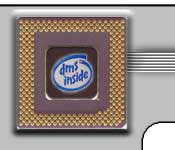|
Undergraduate Course Descriptions |
EE215: Introductory Circuit Analysis |
|
EE215 is the first class in electrical engineering
and attracts pre-engineering students, electrical engineers, and students from other
exciting fields of engineering including mechanical and industrial. Within the context
` of learning how to analyze DC circuits, the course introduces basic problem solving
skills and applications of electrical engineering. Home laboratories have been introduced
to the course in the past few years, so that the student can build circuits at home
without worry of an audience while blowing a component up with any amount of fervor.
|
| EE331: Microelectronic Devices and Circuits 1 |
|
The goal of EE 331 is to introduce
junior EE Students to the physical principles and characteristics
of junction diodes and field-effect transistors. Students work with
diodes and transistors in the lab and enjoy it so much that they feel
compelled to take EE332, the analog follow-up to EE331 after completing
this course. In this course, we teach you about how a MOSFET knows two
words: ON and OFF. EE331 is an introduction not only to
transistors and non-linear devices but also to analyzing those devices,
using techniques that will last long after the last MOSFET has been
fabricated and diced.
|
EE332: Microelectronic Devices and Circuits 2 |
|
EE332 introduces the physical principles
and characteristics of bipolar junction and field-effect transistors
and techniques for applying these characteristics to the analysis
and design of analog circuits. Large signal and small signal models of
circuits are generalizable to a wide variety of non-linear devices, some
which may have not been invented yet. The design project for EE332 is
the tinkerer's delight. You are invited to build and test your own
audio amplifier, infrared controller, or other intriguing electronics
project that will intrigue your friends and family for years to come.
|
EE484: Sensors and Sensor Systems |
|
EE484 is a gateway course to other sensors and device courses in the EE and other
related departments. In EE484, a wide variety of sensors (radiation, temperature,
magnetic, chemical, biological, pressure/strain) are explored. Theory of operation,
commercial devices, and design examples are presented to familiarize the students with
` these sensors enough so that they can use and understand them in future designs. The
class has a laboratory component where students are able to go out into the "field" and
use a variety of sensors acquired for the course.
|
|
|
|
Graduate Course Descriptions |
EE539d: Chemical and Biological Sensors |
EE539d emphasizes chemical and biological sensors from a systems integration and electronic
interface perspective. Sensors include electrochemical, conductivity, ChemFET, surface
plasmon resonance, fluorescence/luminescence, and absorption technologies.
|
|
|
|
K-12 Outreach Efforts |
K-12 Outreach in Electrical Engineering |
| The K-12 program in the department
of electrical engineering seeks to engage both faculty and students
in volunteer outreach activities associated with direct interactions
with students at K-12 grade levels in the state of Washington.
The mission of the K-12 program is to engage interest and facilitate
the development of learning skills specifically associated with
engineering fields. For more information, please check out the
K-12
website. |



